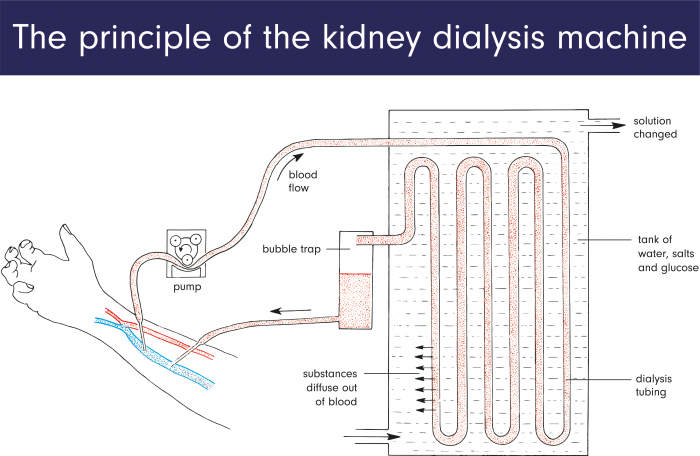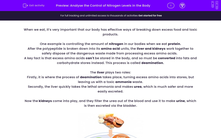When we eat, it’s very important that our body has effective ways of breaking down excess food and toxic products.
One example is controlling the amount of nitrogen in our bodies when we eat protein.
After the polypeptide is broken down into its amino acid units, the liver and kidneys work together to safely dispose of the dangerous waste made from processing excess amino acids.
A key fact is that excess amino acids can't be stored in the body, and so must be converted into fats and carbohydrate stores instead. This process is called deamination.
The liver plays two roles:
Firstly, it is where the process of deamination takes place, turning excess amino acids into stores, but leaving us with a toxic ammonia waste.
Secondly, the liver quickly takes the lethal ammonia and makes urea, which is much safer and more easily excreted.
Now the kidneys come into play, and they filter the urea out of the blood and use it to make urine, which is then excreted via the bladder.

As you can now appreciate, we’d be in a lot of trouble without our kidneys, and when damage or disease slows them down, we have kidney failure.
Patients with kidney failure need serious treatment, which can include dialysis, or organ transplant.

Dialysis involves a specialised machine taking over the kidneys’ role in blood filtration to stop waste building up, but also to preserve normal water and mineral blood content:
A patient sits down and has a tube put into their vessels which is then connected to the dialysis machine.
The dialysis machine takes poorly filtered blood and tries to mimic the content of a healthy person’s blood, using a partially permeable membrane through which ions and water pass out of the blood.
Big molecules like proteins can’t pass through because healthy kidneys would never let proteins go into the urine!
To stop dissolved ions and glucose being removed too, the blood mixes with dialysis fluid, which has the same concentrations of these as healthy blood.
Only waste like urea and excess ions and water diffuse across the barrier out of the blood.
The nuisance with dialysis is that people have to come into hospital at least three times a week for three to four hour periods at a time, and are at a much higher risk of blood clots and infections.
So, clearly it's very unpleasant and actually costs a lot for the NHS to run, but it can save lives by buying time for a living or recently deceased organ donor match to be found, as organ transplant is the only current cure for kidney failure.
Now it's time for some questions!







